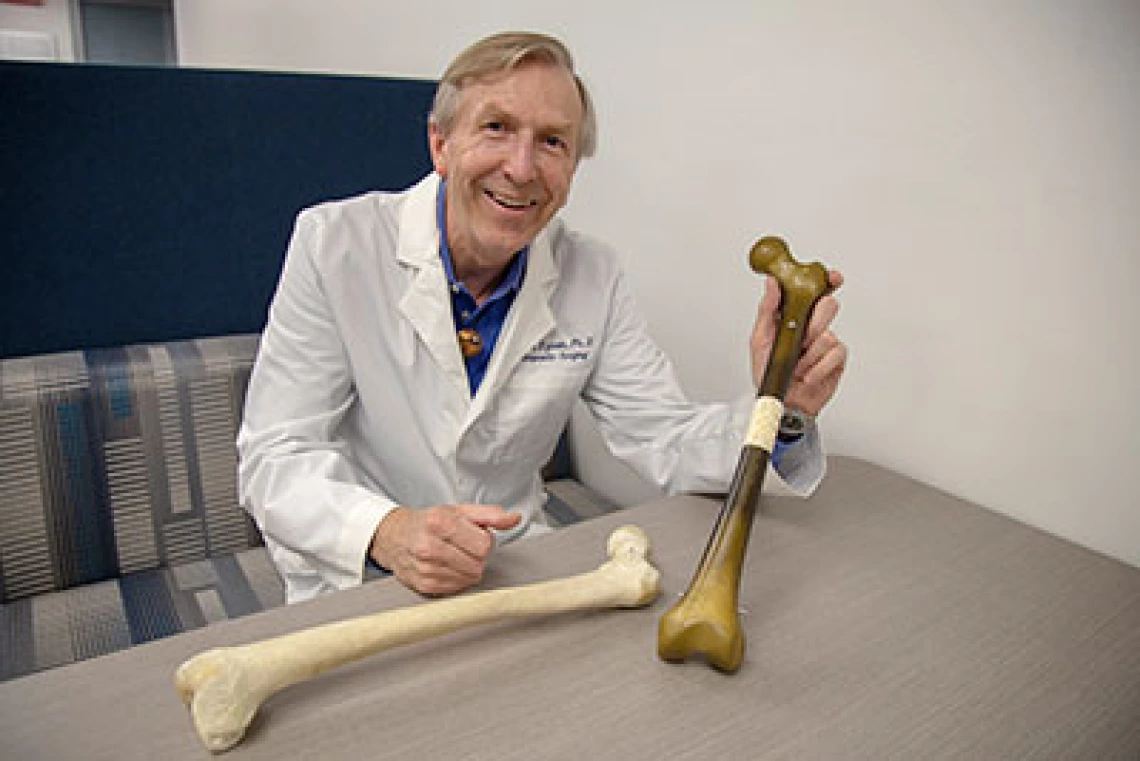UA Researchers Study How to Regrow Long Bone Segments Using 3D Printing

Some broken bones never heal, but professor of both orthopaedic surgery and biomedical engineering John Szivek is researching ways to change that with a combination of 3D-printed scaffolds and stem cells.
According to Szivek, no current surgical treatment can ensure an injury that causes a long bone to shatter will heal, which is a particularly big problem for the military.
“Explosions or combat injuries can cause big bone defects," he said.
To help military personnel with these devastating injuries, Szivek – who holds a joint appointment in the Department of Aerospace and Mechanical Engineering – has received a five-year, $2 million grant from the U.S. Department of Defense to study how to heal bone fractures using 3D-printed plastic, bone-shaped frames that can replace large, missing or broken bone segments. These scaffolds will be filled with calcium particles and adult stem cells, two key elements that lead to much faster healing and bone growth. Once implanted, the scaffold will serve as a template for the bone to grow on.
The team will test whether exercise early in the healing process can help speed up healing and recovery by embedding the 3D implants with tiny sensors that can wirelessly transmit exercise activity.
"This is an incredible example of the kind of innovative research that is made by possible by technological advancement through the convergence of the biological, physical and digital worlds, and exactly the kind of project that demonstrates how the UA is a leader in cutting-edge solutions to difficult challenges,” said UA President Robert C. Robbins. "The work that Dr. Szivek and his team are doing to help these individuals is a great example of using new technology to significantly improve quality of life for patients. I am confident their unique research will lead to the development of more effective treatments to repair critical bone injuries."
